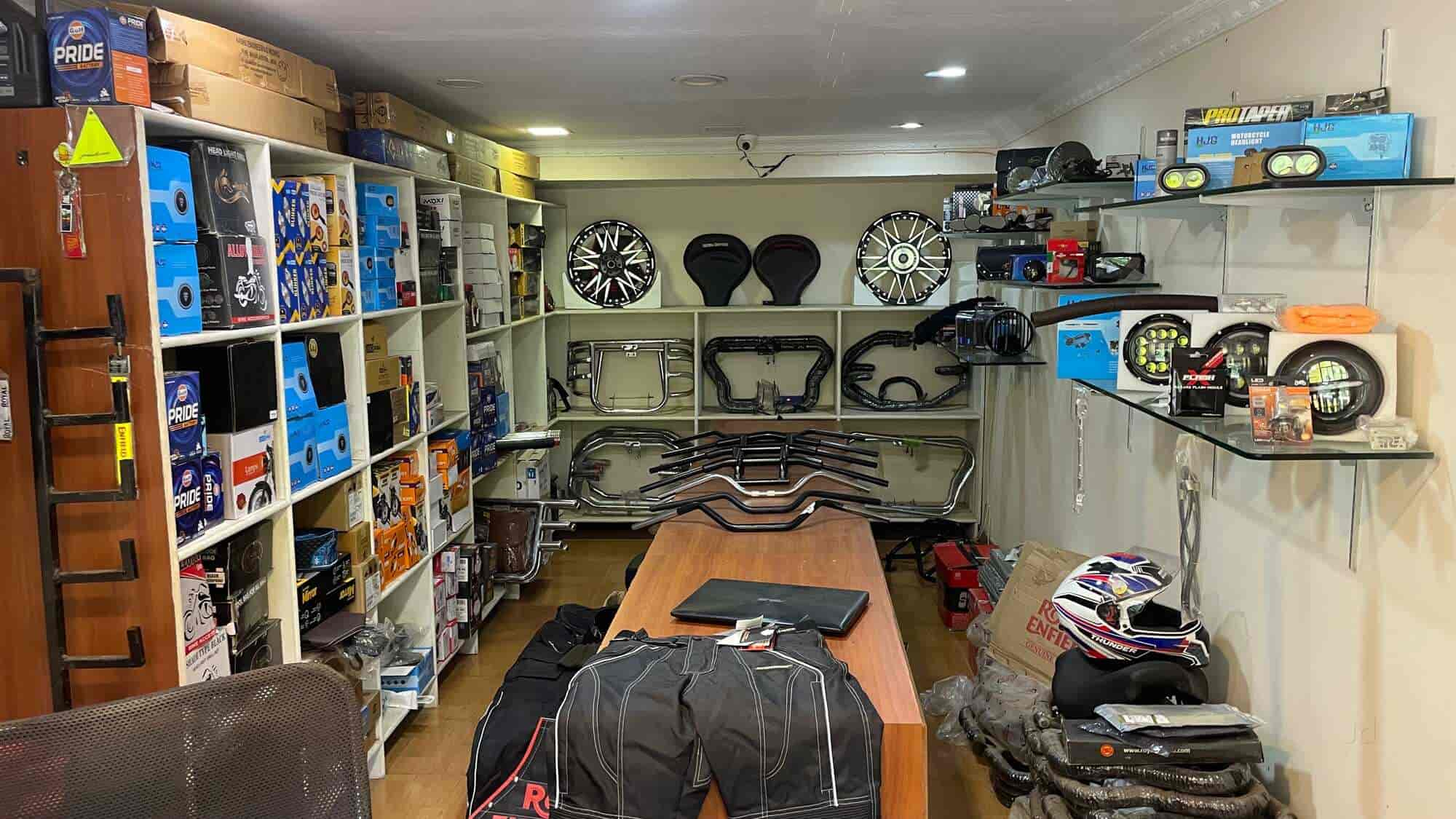Check Out Our Motorcycle Shop for Professional Guidance and Quality Products
Check Out Our Motorcycle Shop for Professional Guidance and Quality Products
Blog Article
Understanding the Important Parts of a Motorcycle: A Comprehensive Guide for Lovers
For motorcycle enthusiasts looking to elevate their riding experience and ensure their bikes run smoothly, understanding the necessary parts of a motorbike is vital. Each component, from the engine's detailed workings to the vital role of the stopping mechanisms, not only affects performance but likewise security and comfort.
Engine Elements

The camshaft plays a critical function in controlling the timing of the engine's valves, ensuring the specific opening and closing essential for efficient gas and air intake, in addition to exhaust expulsion. This timing is crucial to preserving ideal engine performance and efficiency. Furthermore, the carburetor or fuel shot system, depending on the bike model, is liable for mixing air with gas in the right ratio for combustion.
The air conditioning system, either air or liquid-based, works to preserve the engine's temperature level within operational restrictions, avoiding getting too hot and ensuring long life - mx parts nz. Each part, thoroughly designed and incorporated, adds to the seamless operation of the engine, defining the bike's power result and overall performance
Transmission System
Important to the motorbike's capability, the transmission system ensures reliable power transfer from the engine to the wheels. This system consists of several critical parts, consisting of the clutch, transmission, and final drive, each playing a vital function in equating the engine's power right into activity. The clutch, typically run by a hand lever, offers to disengage the engine and involve from the transmission, allowing for smooth gear changes and regulated velocity.
The transmission, commonly described as the transmission proper, consists of a collection of gears that bikers can manually shift through to readjust the bike's speed and torque output. These gears are prepared in a series that allows the motorbike to speed up smoothly and preserve ideal engine efficiency throughout different speeds. Many motorbikes use a sequential transmission, requiring the motorcyclist to move equipments in a predetermined order.
Braking Mechanisms
While understanding the transmission system is vital to taking advantage of a motorcycle's power, similarly crucial is the capability to regulate and quit that power properly, which is where stopping mechanisms enter play. Brakes are vital for security and performance, giving the biker with the needed control to navigate various terrains and problems. Commonly, motorbikes feature 2 kinds of braking systems: disc brakes and drum brakes.
Disc brakes are a lot more prevalent in contemporary motorbikes due to their premium efficiency. This system offers much better heat dissipation, constant performance, and improved quiting power, especially in damp problems.
Conversely, drum brakes, though less usual, are still found in some motorbikes. They work by pushing brake shoes against the internal surface of a drum connected to the wheel. While normally less efficient in warmth dissipation and quiting power, drum brakes are less complex and a lot more affordable.
Recognizing these stopping systems' nuances allows cyclists to preserve their motorbikes correctly and value the design that makes certain effective and safe stopping.
Suspension and Steering
Suspension and guiding systems are crucial parts that considerably influence a motorcycle's handling and trip comfort. The shock absorber, containing forks at the front and shock try this site absorbers at the back, takes in roadway irregularities, enhancing stability and control. Front forks, upside down or generally telescopic, compress and rebound to alleviate influences, while back shock absorbers keep tire contact with the roadway, important for traction and safety and security.
Guiding, centered around the handlebars, links the cyclist to the motorcycle's directional control. The steering head bearings ensure pop over to this site smooth operation, enabling specific ability to move. Proper placement and upkeep of these bearings are critical for foreseeable guiding response and reducing cyclist tiredness.
The suspension's adjustability is an additional crucial element; preload, damping, and rebound setups enable modification to suit different riding problems and styles. This adaptability is essential for optimizing efficiency, whether browsing metropolitan roads or dealing with sturdy tracks. Developments like electronic suspension systems use real-time modifications, enhancing trip quality across varied terrains.

Electric Solutions
After ensuring a smooth and regulated ride with efficient suspension and guiding systems, focus transforms to the electric systems, a pivotal element of contemporary bikes. These systems play an important role not just in starting the engine yet additionally in powering different elements that boost the capability and safety and security of the bike.
At the heart of a motorbike's electric system is the battery, which shops electric energy required for starting the engine and powering complementary systems - motorcycle parts nz. The alternator or generator, combined with the rectifier-regulator, guarantees the battery stays charged while the bike functions, transforming power into electrical power and maintaining voltage degrees
The ignition system, one more vital component, is in charge of stiring up the air-fuel blend in the engine's cyndrical tubes. Modern bikes typically use an electronic ignition system, supplying better performance and integrity contrasted to traditional systems.
Illumination systems, consisting of fronts lights, tail lights, and indications, are also crucial, ensuring visibility and safety for the motorcyclist. Additional electronic elements such as sensing units, control units, and shows add to advanced attributes like fuel injection administration, anti-lock braking systems (ABDOMINAL MUSCLE), and electronic control panels, better improving the riding experience.
Conclusion
A complete understanding of a motorcycle's important elements, including the engine, transmission system, stopping mechanisms, suspension, steering, and electric systems, is indispensable for lovers aiming to optimize safety and security, performance, and comfort. Mastery of these components permits for notified decisions relating to see here upkeep and upgrades, eventually enhancing the riding experience. By incorporating this knowledge, riders can ensure their motorcycles operate at peak efficiency and integrity, consequently making the most of both enjoyment and longevity of their cars.
For bike enthusiasts looking to elevate their riding experience and guarantee their bikes run smoothly, understanding the essential elements of a bike is critical.Essential to the motorbike's functionality, the transmission system makes certain reliable power transfer from the engine to the wheels.While understanding the transmission system is crucial to using a bike's power, similarly essential is the capability to control and quit that power efficiently, which is where stopping mechanisms come into play. Usually, bikes include 2 kinds of stopping systems: disc brakes and drum brakes.
A complete understanding of a motorbike's necessary parts, including the engine, transmission system, braking devices, suspension, guiding, and electric systems, is indispensable for enthusiasts aiming to enhance comfort, efficiency, and safety.
Report this page